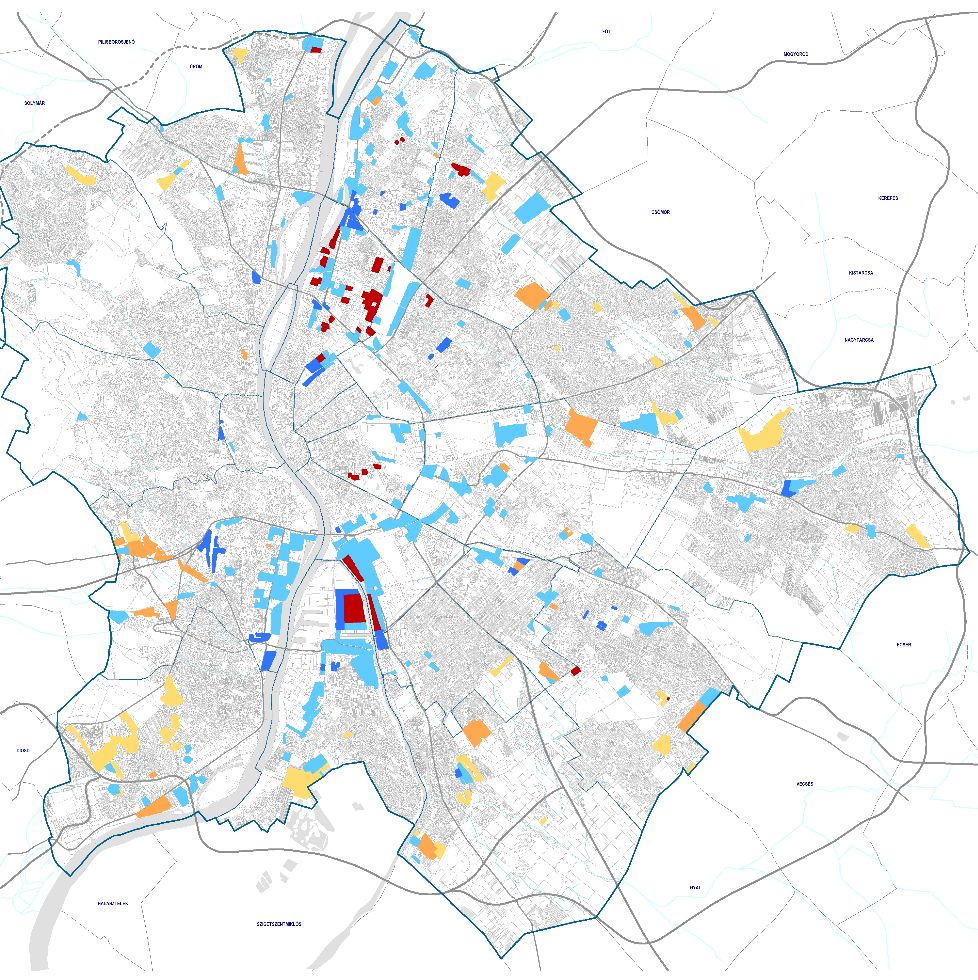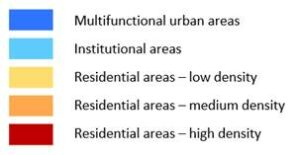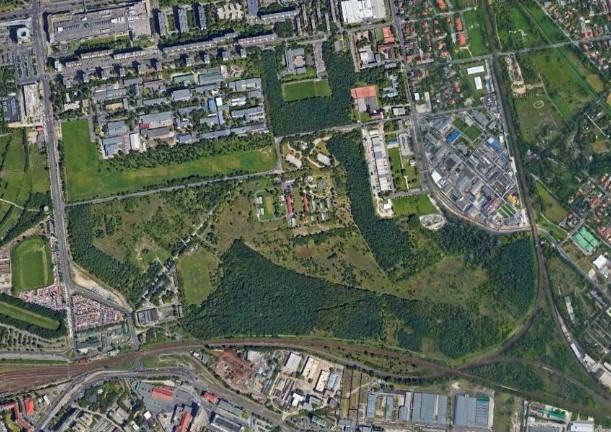The Municipality of Budapest decided to ensure affordable housing and healthy, green environment, liveable and vibrant neighbourhoods in Budapest, and has launched the ‘Home in Budapest – Medium-term urban development strategy’ to reach these goals. The Sustainable new neighbourhoods concept is part of the strategic work. The aim is to assess what is currently being developed in the city within the past 10 years, define a coherent vision for the future and, on this basis, make proposals for regulatory change. An open-to-the-public online conference had been organised on 9th of December ’21 to extend the concept towards the citizens as well.
There have been an increasing number of long-term investment plans in Budapest in the last decade, which are to be built over a period of 5 to 15 years and which will bring a significant transformation in a particular district or neighbourhood.
The Budapest Municipality aims to offer development opportunities within the city limits, especially in the transition zone to reduce urban sprawl while improving quality of residential areas. The Municipality concentrates on brownfield sites, with a housing focus, because one of the main problems in Budapest, especially in terms of daily transport and commuting, is the population moving out to the suburban areas. Budapest currently has more than 2600 hectares of brownfield areas that can be used for new developments.


In order to achieve the above-mentioned goals, the project is looking at a new set of thematic areas:
- What principles and criteria should developments in the 21st century meet?
- How can the management of the disused areas be beneficial for the city and its residents?
- How can new developments be sustainable in spatial, environmental, and socio-economic terms?
- How can we take climate awareness into account from the planning stage and address the growing environmental problems at urban scale?
- How can local authorities, planners and investors work together beyond the current situation?
The sustainable new neighbourhoods concept will be summarised in a manual, to help developers, district municipalities and urban planners to create projects that meet 21st century requirements.
The conference of the Sustainable new neighbourhoods project explored the themes of sustainable land management, innovative population retention, and an enabling development environment:
- The presentations on spatial and land management focused on brownfield sites and the conditions for the development of a compact city.
- The socio-economic presentations looked at innovative solutions to the housing crisis in an all-round ideal development environment through the eyes of market players and experts.
- Sustainability as a horizontal approach was explored in terms of the adaptability of the city, with a foreign perspective on positive energy districts.
- Cooperation is also important because more than 70% of the land available for development is in private ownership. Therefore, the conference have placed great emphasis on giving a voice to market players and property developers, in all topics.
- The ATELIER project and the PED concept was also presented, as a basic principle that new developments should follow. An overall picture of ATELIER project was presented by Kinga Lőcsei – Tóth from Department for Climate and Environmental Affairs of Budapest Municipality. Then Renée Heller, Professor of Energy & Innovation at the Amsterdam University of Applied Sciences, talked about the PED Energy System (PED Goals, Energy System: Components, Boundary Flexibility, Demand, Supply and Temporal Resolution, Renewable Energy Options, Energy System Choices, Technology Choices), followed by Frans Verspeek on behalf of Municipality of Amsterdam, who presented the experiences of the City of Amsterdam in the development of PED areas and briefly presented the related projects in Amsterdam.

